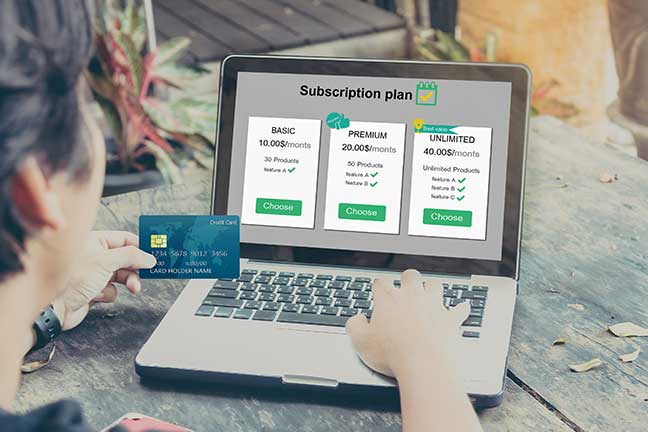Here we are, arriving at the time of making plans and setting goals for a new year again.
With inflation flying high into 2024, many of you may seriously be considering setting new financial resolutions for the coming year. While saving money is often easier said than done, small steps towards savings goals can make a big difference and bring positive changes to your lives.
In this blog, we will share with you some money saving tips to help you create a better financial future.
1. Make a budget and stick to it
Creating a budget may sounds cliche, but it remains one of the most powerful ways to curb impulse purchases and keep you on track to meet your savings goal.
Making a budget with a budgeting app today has become much easier than in the past. Take an afternoon to go through your incomes and expenses and set a realistic budget that aligns with your needs. It’s important not to set an overly ambitious savings goal that may force you to ditch the whole budget within a few days.
Moreover, tracking all your expenses and sticking to your budget is crucial. As you keep a record of your spending, you can regularly review and make necessary adjustments to ensure your budget works efficiently for you. After all, your budget should be a trusted ally in saving money, rather than a formidable enemy.

2. Reduce restaurant spending
While listing all your expenses to make a budget, you can gain a better understanding of where your money goes every month. If you find it difficult to make ends meet, start saving money by cutting discretionary spending.
It’s no secret that making your own meals is one of the easiest ways to save money, let alone that eating out has become way pricier than ever as inflation goes up. Don’t worry if you are not a skilled cook; there are numerous recipes available online to make simple meals. You will be surprised by how much money you can save by cooking at home.
If you still crave for restaurant food, try reducing the frequency of dining out or opt for ordering fewer items. Additionally, taking advantage of a cashback credit card to reduce your credit card debt or score other forms of financial benefits.
3. Strategize online shopping
Believe it or not, we tend to spend more when shopping online. While there are undoubtedly various online coupons and promotional deals that can help save money, the convenience of being able to shop anytime and anywhere often leads to impulsive purchases of unnecessary items.
If you take stock of your belongings, such as clothes, shoes, or food, and find many of them remain untouched, it’s a clear indication to review your spending habits. Rather than checking out immediately after adding items into your shopping cart, consider implementing a cooling-off period. Revisit your shopping cart a few days later, and if you still desire the items, proceed with the checkout process.
4. Shop at discount and bulk stores
Discount stores typically offer off-brand or generic products at lower prices than traditional retail stores. In many cases, you can save more money on grocery shopping during sales period. Remember to compare prices to get the best deal.
Bulk stores, on the other hand, are an excellent place to buy staples like toilet paper and cleaning supplies. By purchasing such products in bulk, you can also reduce the frequency of shopping trips and save on gas or transportation costs.

5. Terminate unnecessary subscriptions
You may not realize how many service subscriptions you’ve accumulated over years. While these subscriptions may seems a great bargain individually, they can quickly add up and secretly eat into your wallet.
Making a list of all your subscriptions, such as streaming platforms and gym memberships, will help you identify non-essential items that stand in the way of reaching your savings goal. Factors should be taken into consideration include the frequency of use, the value it brings to your life, and the availability of cheaper or free alternatives for similar services.
Once you’ve identified these unnecessary subscriptions, don’t hesitate to cancel them. In this way, you can free up extra cash and save more money each month.
6. Switch your internet or cell phone plan
After terminating certain streaming services, you may discover that your current internet plan is no longer necessary. Similarly, you may not actually require as much mobile data or as you initially believed. Take a closer look at your monthly cellphone bill to gain a better understanding of your data needs.
Another way to save money is to consider leveraging government assistance programs, such as Lifeline and the Affordable Connectivity Program (ACP). These programs provide quality mobile and internet services at discounted prices for eligible individuals and families.
You may also qualify for unlimited premier mobile data by signing up Lifeline or ACP through EASY Wireless. And if you are living in certain states, you can score a FREE smartphone from EASY Wireless as part of the package!
7. Lower your living expenses
Even for recurring expenses or non-discretionary costs, there are ways to save money. All you need is a bit of creativity.
Start by examining these expenses closely to identify areas where you can make cut back. For example, you can replace regular bulbs by energy efficient light bulbs to lower your electric bill, choose napkins over paper towels, skip the coffee shop, use a fan instead of air conditioning when you can, search for free activities to cut entertainment costs, negotiate better insurance rates, or do your laundry during off-peak hours to save on utility costs.
Additionally, pay close attention to government assistance programs and apply for benefits that you are eligible for. Even small savings can add up over time, so don’t overlook the potential.

8. Save on Transportation
It goes without saying that public transportation, such as buses and trains costs less than owning and maintaining your own car. Taking buses and trains can help save thousands on fuel, parking fees, insurance and maintenance costs.
Many public transportation systems also offer various discounted passes, which can further reduce your recurring expenses. Spend time to study the public transportation schedules to tailor your itinerary.
9. Create automate savings transfers
Setting up automatic transfers from your checking account to a separate savings account is an effective way to help you save regularly and get closer to financial freedom.
Most banks offer various options for automatic savings transfers, allowing you to choose a plan that aligns with your financial goals. This approach can be particularly beneficial when you have designated savings accounts for specific purposes, such as building an emergency fund, saving for a dream vacation or a down payment.
If you have already set up automatic transfers to make direct deposit into your savings accounts, consider taking one step further by opening a high-yield savings account or an investment account. High-yield savings accounts pay higher interest rates, enabling you to achieve your savings goal in a shorter period of time.
Investment accounts provide access a diverse range of investment products, including stocks and mutual funds. If you are unsure about making investment decisions, consider seeking guidance that aligns with your personal finance goals from a certified financial planner.
10. Lower your loan payments
Loan payments can be a drain on your monthly budget, particularly when interest rates remain at a higher level.
If you have ample disposable income, paying off high-interest debt as early as possible through extra payments will help you save on the overall interest costs. For student loans and mortgages, refinancing is an effective way to lower monthly payments. Another way is to consider enrolling in income-driven repayment to lower your student loan payments.
Savings can be much easier when you are free from paying interest on your debts.


